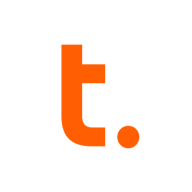

Teradata and TIBCO BusinessWorks are competitors in the enterprise data management and integration space. Teradata holds the edge in handling large data volumes efficiently with its focus on parallel processing and scalability.
Features: Teradata is known for efficiently handling large data volumes with its parallel processing capabilities and robust MPP and shared-nothing architectures. Its comprehensive suite for data mining and analytics allows for fast data retrieval and complex query execution. Teradata stands out in adaptability and scalability with features such as query tuning and intelligent data management. TIBCO BusinessWorks excels with its integration and transformation capabilities, powered by a low-code platform supporting a broad range of technology connections. The ease of use simplifies service deployment, essential for businesses managing various data formats.
Room for Improvement: Teradata struggles with transactional-level processing and data synchronization, partly due to its high pricing and uncompetitive cost models. Enhancements in cloud compatibility, user interface, and SQL functionalities are needed. TIBCO BusinessWorks faces challenges with costly licensing, which can deter smaller enterprises. Its cloud and containerized solution transition requires refinement, better integration for non-technical users, and a reduced memory footprint.
Ease of Deployment and Customer Service: Teradata and TIBCO BusinessWorks offer various deployment models, including on-premises and cloud options, with Teradata providing a slightly broader range of choices. Both products receive positive feedback for customer service and technical support, with Teradata noted for its structured support system supported by educational resources like Teradata University.
Pricing and ROI: Teradata is typically positioned for larger enterprises, offering substantial ROI despite its high initial costs, especially when performance and analytics are critical. Meanwhile, TIBCO BusinessWorks is regarded as similarly expensive, appealing to large enterprises ready to invest in premium solutions. Both emphasize the value of long-term investments but at premium pricing levels.
The technical support from Teradata is quite advanced.
Customer support is very good, rated eight out of ten under our essential agreement.
Customer service is very helpful.
This expansion can occur without incurring downtime or taking systems offline.
Scalability is complex as you need to purchase a license and coordinate with Teradata for additional disk space and CPU.
It is not like AWS where I can add memory or more servers.
I find the stability to be almost a ten out of ten.
The workload management and software maturity provide a reliable system.
It is stable, however, every now and then, it just ends.
Unlike SQL and Oracle, which have in-built replication capabilities, we don't have similar functionality with Teradata.
They should ensure that what was working in the previous version must also work in the new version of BW six.
The learning curve takes time compared to webMethods.
Initially, it may seem expensive compared to similar cloud databases, however, it offers significant value in performance, stability, and overall output once in use.
Teradata is much more expensive than SQL, which is well-performed and cheaper.
Pricing is for an enterprise application, so the company pays for it with a company license.
The data mover is valuable over the last two years as it allows us to achieve data replication to our disaster recovery systems.
It's a great software application for the middleware use cases to connect the front channels to the back ends in a secure and safer way.
When I have an architecture designed to plug in the service itself with BW, it makes things much easier.


Teradata is a scalable data analytics platform designed to meet enterprise demands for large-scale data management and processing, focusing on performance, scalability, and security for complex query executions.
As a leading data warehousing solution, Teradata integrates advanced analytics enabling organizations to derive insights from massive datasets. It supports high-volume data workloads with its architecture optimized for analytical queries. Users benefit from its robust scalability, allowing seamless expansion as data grows. Teradata's SQL engine is compatible with a wide range of data types, ensuring flexibility in data analysis. With advanced security measures, it protects sensitive data across various environments, providing peace of mind to users handling critical information.
What are the most important features of Teradata?Teradata is widely used in industries like finance, telecommunications, and healthcare, where data-driven decisions are critical. Companies leverage its robust analytics capabilities to enhance customer experiences, streamline operations, and ensure compliance with regulatory requirements. In these sectors, quick access to data insights can significantly impact competitive advantage.
We monitor all Data Integration reviews to prevent fraudulent reviews and keep review quality high. We do not post reviews by company employees or direct competitors. We validate each review for authenticity via cross-reference with LinkedIn, and personal follow-up with the reviewer when necessary.